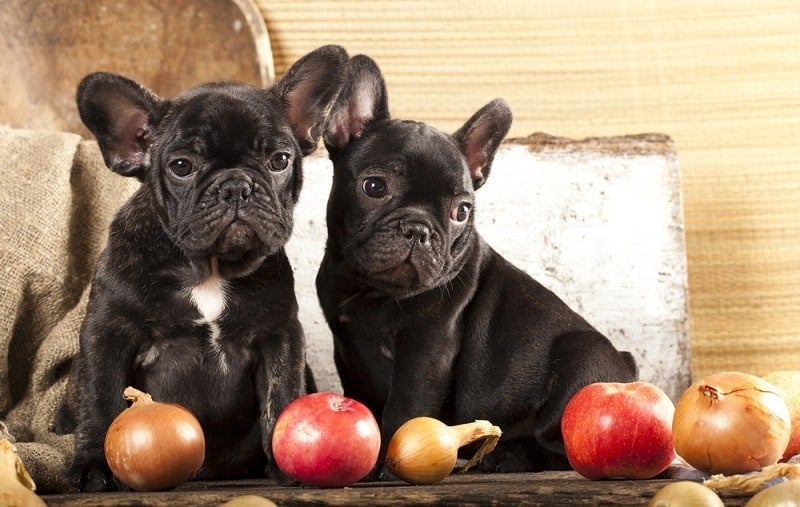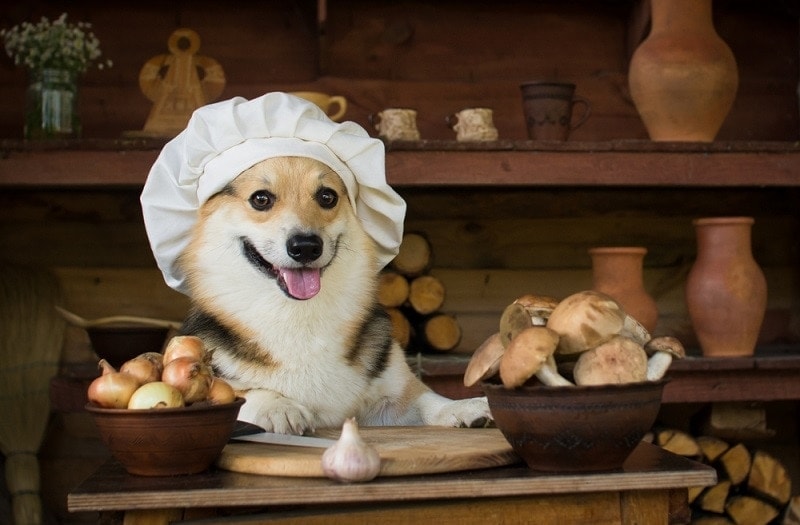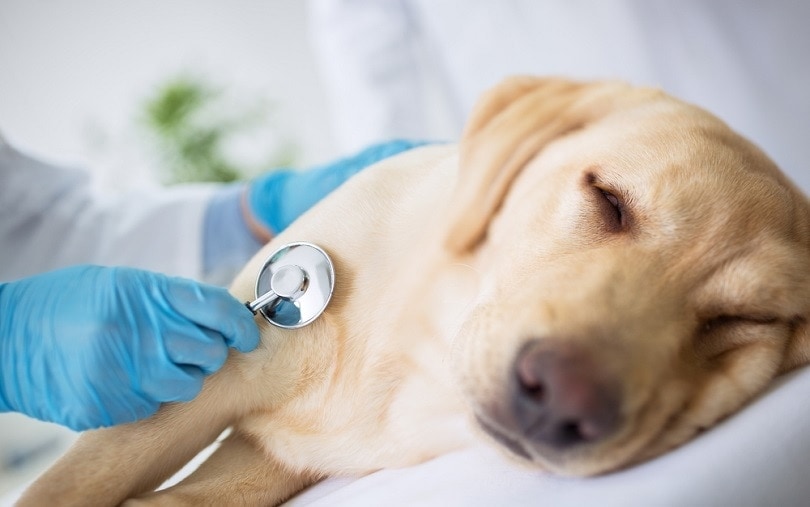Is It Okay to Feed Dogs Onions

Onions sometimes make us cry, but did you know that onions can be life-threatening to dogs and cats? In fact, all members of the onion family ('Alliums' – garlic, onion, chives, and leeks) and their products (such as onion powder for example) can pose a danger, but onions are the most poisonous. Dogs are among the most vulnerable to onions in the animal kingdom, and humans are among the least, due to differences in their metabolism. In this article, we will explore why and how to deal with the problem.
Why Can't Dogs Eat Onions
Onions and alliums contain organosulfur compounds that affect cell processes in the body by causing oxidative damage – the opposite of those familiar 'antioxidant' products. Dogs and cats are extremely sensitive to these compounds. Most of the damage is to red blood cells, which can lead them to work less efficiently, or even die. These changes produce tell-tale changes in the appearance of the red blood cells, which can be seen under a microscope (more on that later!).
The knock-on effects of this red blood cell damage can affect the liver and kidneys, too. Other compounds in onions can also affect the lining of the intestines, which may cause pain and diarrhea.
How Much Onion Can Kill a Dog?
No two dogs are the same so this toxic amount can be very variable and individual. A good rule of thumb to work with for dogs is approximately 5 grams of onion per kilogram body weight – or just under 1 ounce of onion per 10 pounds body weight. Some dogs may be a bit more resistant than those numbers might suggest, but it is safer to assume that any amount of onion is potentially a risk.
Generally, if a dog eats more than half a percent of their body weight in onion, they will develop toxicity if left untreated. In real terms, if a 66-pound (30 kg) Labrador ate 5 ounces (150 g) of onion or onion product – which is only the weight of one medium onion – he or she would be at risk of poisoning.
Remember that any part of the onion plant can be toxic, and it is still toxic if cooked (think onion rings, for example). The effects can also accumulate if a dog is fed smaller amounts of onion over a few days. Watch out for onion powder, as this is commonly added to lots of processed foods.


What to Do if Your Dog Eats Onions
1. Prevent further access.
Prevent your dog from eating any further onion or onion product. It is important to limit the amount eaten as much as possible. Clean up any spills on the floor or accessible products on surfaces and shut your dog away while you do this. If your dog has had processed food with onion in, it is worth making sure there are no other sources in any other foods.
2. Get the details.
Work out how much onion your dog has eaten and take a note of when it happened. It is important to try and work out roughly how much onion product your pet has eaten, so the veterinarian can use this with the body weight of your pet to calculate whether this is likely to be a toxic dose or not. It is also useful to try and figure out when the onion was eaten, as this will help the veterinarian plan the right treatment for your dog.
3. Call your veterinarian.
In all cases, it is essential to seek the advice of your veterinarian, even if it's just a phone call to discuss the situation! Provide the veterinarian with the information you have gathered- they will be able to help formulate a plan of action. If your usual veterinarian is not available, an emergency clinic or the nearest open veterinarian will be able to provide you with the correct advice.
4. Follow your veterinarian's instructions.
The veterinarian may recommend seeing and examining your dog at the clinic, and the sooner this happens the better your chances of a successful outcome. If the amount eaten is not a toxic dose, the veterinarian may be happy for you to monitor your dog at home, but it is best to seek advice first in any case.
5. Don't treat at home.
It is important not to try and treat these problems at home. It is easy to cause more harm than good with a home remedy- many are unproven or even dangerous. Any delay using inappropriate or ineffective remedies may mean that a treatable problem is left too long, and it may be too late if you later decide to seek professional help.
Related Read: My Dog Ate Raw Chicken! – Here's What to Do (Our Vet Answers)


What Happens if a Dog Eats Onions?
How long after eating onion will a dog get sick?
Usually, symptoms will appear within 1 to 3 days of the onion being eaten. It often starts as a tummy upset, with vomiting, diarrhea, tummy pain, lethargy, and loss of appetite. This is then followed by the effects of the red blood cells being damaged and dying.
Having low numbers of red blood cells is a condition called anemia, and this will turn the normally bright pink gums above their teeth pale, and cause weakness. Their bloodstream will no longer carry oxygen around the body effectively, so dogs may breathe extremely fast to compensate, or seem to struggle to breathe. Additionally, their heart rate will be high. They may also produce dark brown or red urine, caused by the body removing all those damaged or dead red blood cells.
Anemia and dying red blood cells can damage the liver and kidneys and unfortunately, in some cases dogs and cats will die due to these effects. But don't panic yet – this onion poisoning can be treated as long as you seek help in time!
Can onion poisoning in dogs be treated?
If you realize that your dog or cat has eaten onions or their products within the past 4 hours, your veterinarian can usually give an injection to cause vomiting to bring up most of the toxins before they have a chance to be absorbed into the body. Sometimes a product to protect the gut from any leftover toxins is prescribed afterward – activated charcoal for example. In these situations, the outcome is usually excellent.
If more than 4 hours have passed, it is best to start supportive therapy as most of those toxins are likely to have been absorbed. You and your vet should look for the symptoms listed above. The veterinarian can also perform a blood test to check for any red blood cell damage and look for any changes to the liver and kidneys that can follow that damage. Under the microscope, the veterinarian may be able to see evidence of damaged red blood cells, appearing as little blobs called Heinz bodies on the outside of each cell.
Can onions kill dogs?
If onion toxicity is suspected or confirmed, quick action and early treatment is a good idea. Treatment consists of hospitalization and intravenous fluids to dilute the effects of the toxins and ensure the body stays well hydrated. There is no specific antidote, but pain relief, anti-nausea drugs, and appetite stimulants all may help.
Supportive care helps your pet's body keep going while it flushes out those toxins and replaces the damaged red blood cells. In severe cases, if too many red cells are lost, a blood transfusion and extra oxygen for breathing may be needed, but this is not common. Whilst dogs can die from onion poisoning, it's very rare as long as they get treatment.


Conclusion: Dogs and Onions
Dogs and cats are extremely vulnerable to onion poisoning and the effects can be life-threatening. However, it can be treated and managed as long as you act quickly to identify the problem and seek professional veterinary help as soon as possible. In the majority of cases, your pet is likely to make a good recovery. And don't worry, there are lots of other perfectly safe and healthy vegetables to add to your dog's diet, including carrots, cucumbers, and broccoli
Featured image credit: Liliya Kulianionak, Shutterstock
elliottextouralke.blogspot.com
Source: https://www.hepper.com/my-dog-ate-onions-vet-answer/

0 Response to "Is It Okay to Feed Dogs Onions"
Post a Comment